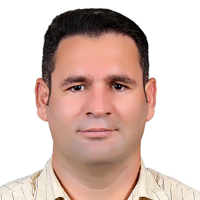The Role of Physical Activity in Modulating Covid-19 Neuropsychological Complications: A Narrative Review
Since 2020, the COVID-19 pandemic, triggered by SARS-CoV-2, represents the major global issue affecting the lifestyle of people around the world. Wuhan, China was the first city to detect the SARS-CoV-2 virus, but the virus soon spread around the world, forcing the World Health Organization to declare a global epidemic on March 11, 2020 (1). Previous pathological conditions or comorbidities such as old age are one of the main causes of premature death and increased morbidity and mortality due to COVID-19 (4). Inactivity due to hospitalization and bed rest and reduced physical activity due to constant quarantine and social distancing can reduce the ability of organ systems to resist viral infection and the risk of damage to the immune, respiratory, and Increase cardiovascular systems, musculoskeletal and nervous system (4). On the other hand, the health benefits of physical activity, from cardiovascular health to mental health, have been well established (5). Decreased physical activity and increased sedentary behaviors were reported during quarantine in several populations, including children and patients with a variety of medical conditions (6). In general, COVID-19 lifestyle changes have led to a decrease in physical activity and consequently more inactivity in different parts of the community, which can pose a risk to general or mental health, especially for certain populations. In this study, we have tried to review the neurological and psychological effects of COVID-19 and the resulting lifestyle changes, and specifically the role of exercise in relation to these effects.
Central nervous system (CNS) and peripheral nervous system (PNS) manifestations can occur during and after COVID-19, but the underlying mechanisms, symptomatology, and frequency of these complications are not well understood (7). Limited postmortem studies have shown signs of hypoxic brain damage and inflammatory neurological changes in the brainstem, while neuropathological data from the PNS are almost non-existent. Due to the cause, direct invasion of acute respiratory syndrome of COVID-19 virus to nerve tissue has been suggested in several cases, but autoimmune damage and neurological complications related to intensive care management can also be effective. The contribution of these mechanisms to the overall burden of CNS and PNS complications of COVID-19 is unknown (7). Follow-ups in Germany and the United Kingdom have shown that neuropsychological symptoms after COVID-19 in 20 to 70% of patients, even in young adults, last for months after the onset of respiratory symptoms, suggesting brain involvement persists (9). COVID-19, which enters through angiotensin-converting enzyme receptors, can damage endothelial cells, leading to inflammation, thrombosis, and brain damage. In addition, systemic inflammation leads to a decrease in monoamines and neurotrophic factors and activation of microglia, which leads to an increase in glutamate and N-methyl-d-aspartate-3 and excitatory toxicity, and these factors cause the onset or exacerbation of existing neuropsychiatric symptoms. They are already (9). However, the extent of damage caused by the COVID-19 pandemic strain is still speculated; it has recently been suggested that irregular neuro-endocrine-immune interactions may be behind psychiatric manifestations observed in quarantined individuals (12, 13). Persistent and increased stressful events can direct immune, endocrine, and nervous system responses primarily through hypothalamic-pituitary-adrenal (HPA) mediated dysfunction (12), and changes in the levels of systemic inflammatory mediators or the brain predispose individuals to pathological psychological conditions. It acts like anxiety and depression. In addition, stress can be a potential trigger for neuroinflammation, a term used to indicate an imbalance or intensification of immune signals in the brain that can lead to several disorders such as aggression, psychosis, depression, and anxiety disorders (12). Covid 19 has also been shown to alter nerve growth factors that may affect the neuropsychological effects of Covid-19 (16,17).
The current situation of the epidemic as a stressful situation has led to a decrease in physical activity in the general population. Considering that exercise training has been shown to be useful in a number of pathologies with which post-COVID-19 syndrome bears similarities in terms of symptoms and possible pathogenic mechanisms; therefore, it is necessary to consider the potential optimal effect that this has on the improvement or prevention of COVID-19 neuropsychiatric complications. Despite the benefits of exercise, there are limitations to sports activities for different people, which can endanger the neurological and mental health of different people, especially people with underlying diseases or people with special conditions such as patients, children and the elderly. A review of a study that specifically looked at the effect of exercise training on nerve function in patients with COVID-19 were not found; However, based on trials, general recommendations for exercise training in patients have been identified that may be beneficial to the neurocognitive effects of COVID-19 in both healthy individuals and those with COVID-19 syndrome.
There is ample evidence that appropriate, supervised exercise may be an effective multisystem therapy to reduce the neuropsychological effects of COVID-19 syndrome, which is commensurate with the variety of cases and symptoms. Further studies on the effects of exercise-based therapies on post-COVID-19 syndrome are needed to provide practical insights into what type of exercise training should preferably be prescribed, with an emphasis on weight management and adherence strategies. In addition, the effect of post-COVID-19 syndrome on neuropsychological complications of certain demographic groups such as children, adolescents or the elderly remains unknown; Even exercise training and rehabilitation programs for neuropsychiatric complications in these individuals are not known. Overall, a multidisciplinary and integrated approach, part of which is related to sports science, is essential to improve individuals' clinical conditions; nevertheless, neurological and psychological aspects must be integrated into the assessment, as well as the social impact that this pathology entails. Due to the limitations of studies, new proposals for long-term research into the disease in an effort to restore full function and return to previous life are recommended.
- حق عضویت دریافتی صرف حمایت از نشریات عضو و نگهداری، تکمیل و توسعه مگیران میشود.
- پرداخت حق اشتراک و دانلود مقالات اجازه بازنشر آن در سایر رسانههای چاپی و دیجیتال را به کاربر نمیدهد.



